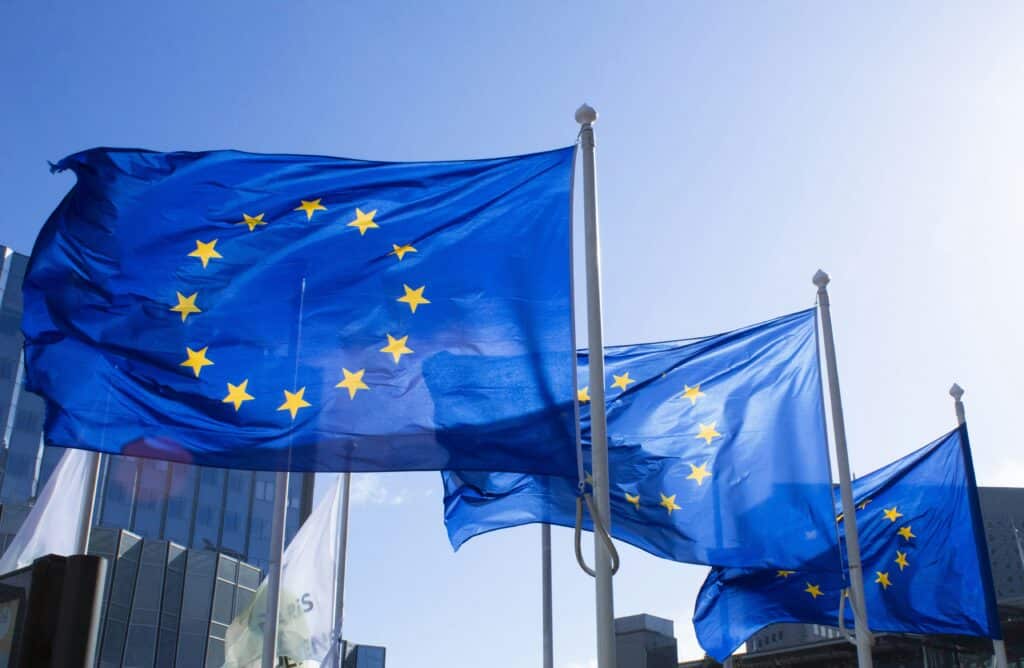Electrification of Buildings and Data
This is the third installment of the Topic of the Month "Electrification of final uses: updates from the FSR"
Buildings account for 40% of final energy consumption in the Union and 36% of its energy-related greenhouse gas emissions. Additionally, approximately 75% of Union buildings are energy-inefficient. Therefore, the decarbonisation of the EU building stock has a crucial role to play to support the EU target of net-zero emissions by 2050.
The electrification of buildings is considered a key vector in the enormous renovation effort required to meet this goal. Electrification of the building sector can also be an important driver of digitalisation, which, in turn, can enhance the building sector’s energy efficiency and value to the energy system as a whole. However, to unlock this potential, the metering and consumption data of buildings must be easy and secure to access, via a clear, simple and stable regulatory framework.
In this post, we examine this important node in the EU’s twin transition of complementarity between decarbonisation and digitalisation in more detail.
Electrification and Digitalisation of Buildings
Electrification will play a key part in reducing emissions from the building sector in two principal ways. First, the relative share of electricity in the energy demand of a decarbonised building sector will be higher than it is now, driven by the rollout of energy-efficient and low-carbon technologies such as the decarbonisation of heating through the use of heat pumps.
A 2023 study by Eurelectric forecasts that, even as the overall final energy demand of buildings declines due to energy efficiency measures, their electricity consumption will increase to between 2,086 and 2,248 TWh in 2030 and between 2,145 and 2,546 TWh in 2050 from a 2015 baseline of 1,726 TWh. Secondly, and consequently, buildings will progressively become more important for the management of a decarbonised energy system that relies on electricity generation from variable renewable energy sources. Electrification of heating, on-site generation and EV charging points will enable buildings to become more active participants in the energy system, for example through demand-side flexibility, and support energy system integration.
To actualise this potential of building sector electrification, electrification will need to be coupled with digitalisation. The underlying idea is that of a synergetic relationship between electrification and digitalisation: the increasing uptake of digitally enabled, electric heating systems, appliances and generation assets in buildings will result in an increase in data available, which in turn can be used for a more efficient management of the assets, to the benefit of both building occupants and the energy system as a whole.
This is recognised in EU policy documents, with the Renovation Wave Strategy emphasising the potential of an ‘integrated digital renovation’ of buildings, which combines energy storage, demand-side flexibility, on-site generation, and internet of things (IoT) enabled components as a way to foster the active participation of consumers in the energy system. Additionally, the Affordable Energy Action Plan of February 2025 identifies digitalisation as an important source of savings for consumers and highlights the role of AI in electricity grid optimisation, energy efficiency in buildings and demand-side flexibility.
Access to and availability of data will be key to enable the smooth operationalisation of this synergy. The primary source for electricity metering and consumption data of buildings will be smart meters, but smart appliances, heating, lighting, and ventilation systems will increasingly become a source of additional or more granular data that can be used to maximise the potential of buildings as they electrify. This, in turn, gives rise to considerations as to the accessibility and exchange of such data.
The EU Regulatory Framework for Buildings Data Exchange
EU law plays an important role in determining the conditions for the generation of and access to data that is relevant for a more active participation of Europe’s building stock in the energy transition. Four recent developments in EU law have the potential to be especially impactful in facilitating, expanding and regulating the access to and exchange of data relevant for the electrification of the building sector.
Firstly, the Electricity Directive introduced an obligation for Member States or designated competent authorities, usually the national regulatory authority, to specify the rules on the access to data of the final customer by eligible parties, with ‘data’ being metering and consumption data as well as data required for customer switching, demand response and other services, which are certainly relevant data in the context of buildings. The Directive also mandated the recent adoption of the Interoperability Implementing Act on Data Access, which introduced a ‘reference model’ at the disposal of Member States clarifying the roles, responsibilities and the procedures to access and share metering and consumption data with eligible parties, as well as for the access to the data by consumers themselves. These pieces of legislation are essential to access and share metering and consumption data of buildings, allowing them to serve as demand-side flexible resources.
Secondly, and complementary to the provisions of the Electricity Directive, the 2024 recast of the Energy Performance of Buildings Directive introduced a right for building owners, tenants and managers to have direct and free-of-charge access to building systems’ data. The latter are defined broadly as including ‘at least all readily available data related to the energy performance of building elements, the energy performance of building services, the projected lifespan of the heating system, building automation and control systems, meters and measuring and control devices, and recharging points for e-mobility’. Building owners, tenants and managers are entitled to make these data available to third parties.
Thirdly, the Electricity Regulation, as revised by the 2024 Electricity Market Design Reform, defined a new measurement tool to be used to foster the participation of electricity consumers in flexibility services, the so-called dedicated measurement device (DMD). DMDs are devices embedded into or separate but connected to electric vehicles’ charging points, storage and heating systems, and home appliances, for example a washing machine. They enable the measurement of the electricity consumption of that specific system or appliance, allowing the use of the consumption data measured for the purpose of the observability and settlement of demand response and flexibility services, upon the consent of the final customer.
A final promising development outside EU energy law is the introduction of the Data Act in 2024, which gives users of connected products, that is devices collecting or generating data about their use, the right to access and share these data, thereby countering concerns that manufacturers of these products have historically retained too much control over such data. Especially for appliances used within buildings, the Data Act could be important in unlocking more data points for efficient energy management beyond metering data as the electrification of the building sector unfolds.
Challenges for Buildings Data Exchange
The exchange of metering and consumption data of buildings can however be hampered by different factors. We mention only three of them here. Firstly, the varying rate of smart meter rollout in EU countries. Smart meters are essential to enable data-driven energy services in buildings based on data exchange, since they record and transmit granular consumption data. As of 2022, only thirteen Member States had reached a smart meter rollout rate of at least 80%.
Secondly, the EU regulatory framework does not impose a unified model for managing metering and consumption data, i.e., a single data management model. On the other hand, as we mentioned above, it foresees interoperability implementing acts to create a reference model allowing national customisation, the correct implementation of which is a precondition to avoid the differences in national data management models hampering data access and exchange at the EU level.
Thirdly, the regulatory framework for building data exchange encompasses both electricity and data legislation. Therefore, to foster an increasingly easy and secure data exchange, coherence must be ensured both within electricity law and between it and the data legislation, ensuring that the provisions of one set of laws do not hamper the achievement of the objectives of the other.
The abovementioned factors, among others, reveal only one facet of the importance of pursuing the twin transition consistently in energy law and policy. Further efforts in this direction will include the careful assessment of developments such as the formulation and implementation of the forthcoming Electrification Action Plan, as well as the evaluation of Member States’ draft National Building Renovation Plans, which are due by the end of 2025, in light of the relationship between digitalisation and decarbonisation.
If you are interested to know more about the role of electrification in the road to a carbon-neutral building sector and the policies that can contribute to achieve this goal, you may want to consider our course Getting to Net Zero. Moreover, we will offer, in 2026, a second edition of our course on Sustainable and Smart Cities. Stay tuned!
This work has been co-funded by the European Union’s Horizon Innovation Actions under grant agreement No.101069510









